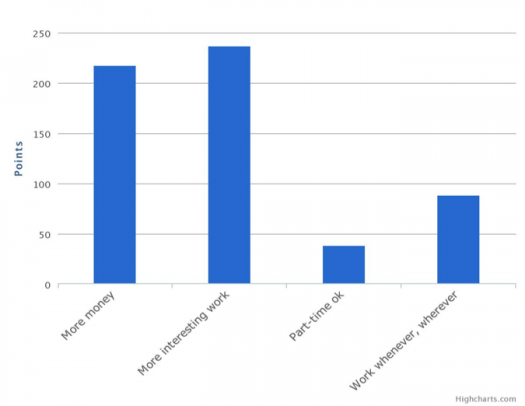 Too often company job descriptions are filled with hyperbole and trite sound bites like “work-hard, play-harder” and focus more on details such as lunch and snacks than the job itself. A job description is your critical first impression when recruiting, and if you lose them before they even apply you’re operating at a steep disadvantage. Too often, generic, lackluster descriptions fail to communicate some pretty cool opportunities.
Too often company job descriptions are filled with hyperbole and trite sound bites like “work-hard, play-harder” and focus more on details such as lunch and snacks than the job itself. A job description is your critical first impression when recruiting, and if you lose them before they even apply you’re operating at a steep disadvantage. Too often, generic, lackluster descriptions fail to communicate some pretty cool opportunities.
In order to get the talent you want and need at your company, sharpen your job descriptions to attract the most qualified candidates. I’ll tell you how do to that, but first I’ll start with what not to do.
Nearly all job descriptions do a poor job at outlining the work opportunity and presenting the employer company in an appealing light. Many descriptions include extensive and unnecessary details about benefits, while others were just a list of generic catch phrases with only vague descriptions of the actual work. Very few descriptions include any information about pay, despite the fact that’s one of those most important data points for employees.
I ran a poll on Hacker News where I asked “What would it take for another company to poach you?” The results were hardly surprising. Developers are mostly attracted to interesting work, closely followed by more money, with lifestyle choices as a distant third, and only 20 percent prioritizing flexible work arrangements.
There seems to be a major disconnect between what matters to prospective candidates and what a job description lays out. I wonder how many job seekers may pass up the perfect fit simply due to the lack of information in the job description.
In most cases, the person writing the job description does not have all the pertinent information (such as job specifics), so the prose defaults to easy-to-write and extremely generic descriptions that focus on culture and “rockstar” and “code ninja” narratives. In many cases, vague job descriptions almost sound inter-changeable across different companies and positions in the industry.
Attracting the Right Candidates
Once you understand what motivates developers — “more interesting work” and “more money” — outbound communications like job descriptions need to be changed to attract these interests.
I analyzed hundreds of job postings, from job boards to descriptions submitted to our platform. I also looked at companies that most appeal to developers such as Facebook, GitHub, Twitter, etc.
I found the following common taxonomy across all great job postings:
- One liner about what the company does.
- Long form descriptions with extensive detail about the exact challenges the developer will face along with what will be accomplished.
- A short list of the requirements; use the actual expectations of experience. Recruiters tend to go overboard with the number of years of experience required (a value that is commonly derided among developers as a very poor metric for talent).
- Salary information. Outlining salary details is quite rare in the job description, but it is extremely effective to finding the right candidates.
If the recruiter (or person writing the job description) doesn’t have the pertinent details like salary and day-to-day aspects of the job, this reflects an internal communications issue that needs to be addressed. Recruiters should have all the resources needed to attract the best talent.
Luring Top Talent in a Competitive Field
Developers and designers know they are in demand. At less than 4 percent unemployment, which is broadly considered by economists as full employment, companies will most likely need to turn their attention to passive candidates. In other words, they’ll need to find a qualified candidate who isn’t necessarily looking for work, but who may be interested if the right job comes along.
Mediocre or generic job descriptions won’t lure top talent away from their current gig to your opening. Providing color and excitement about your company is an important first step, but provide solid details about the specific job to make it stand out in a sea of opportunities.